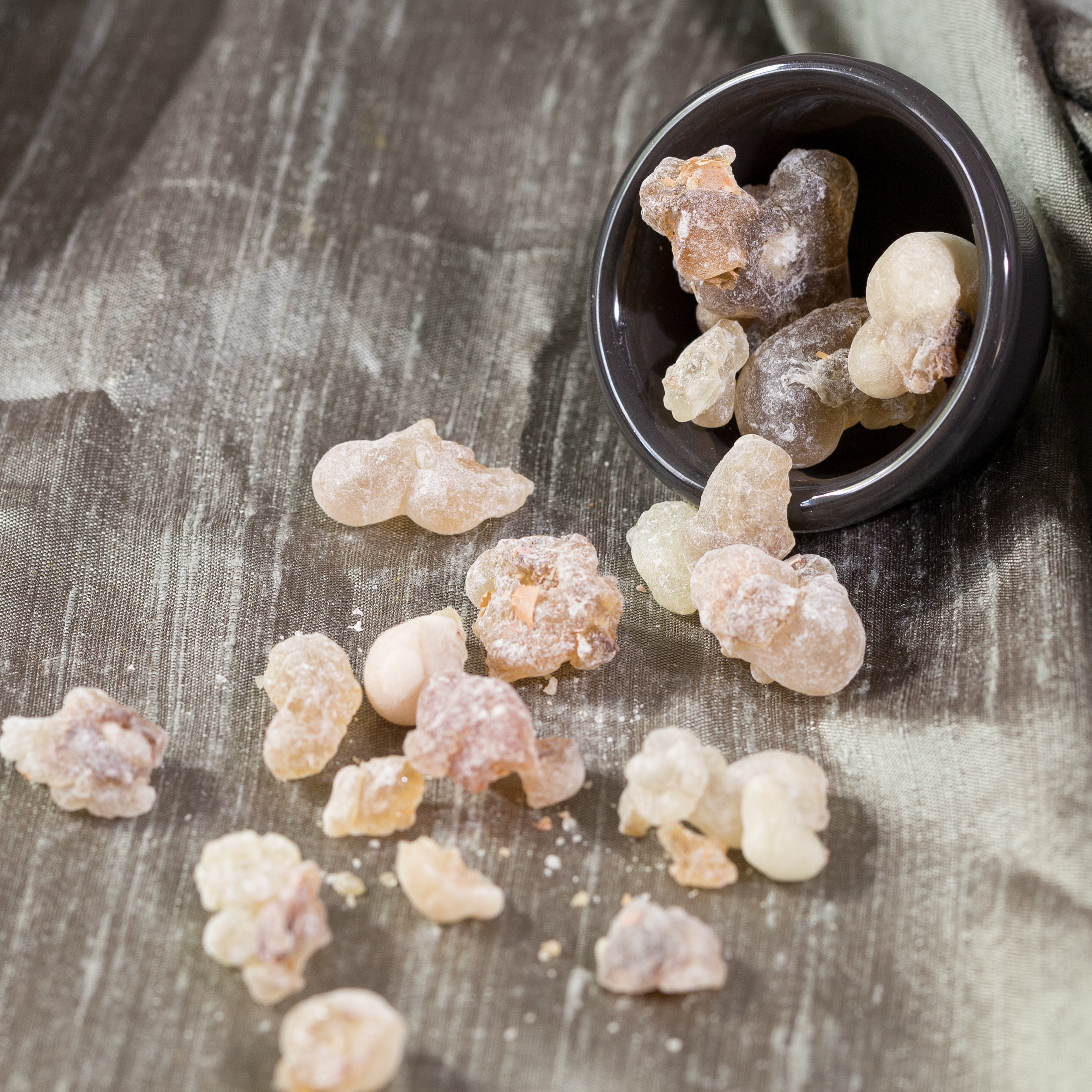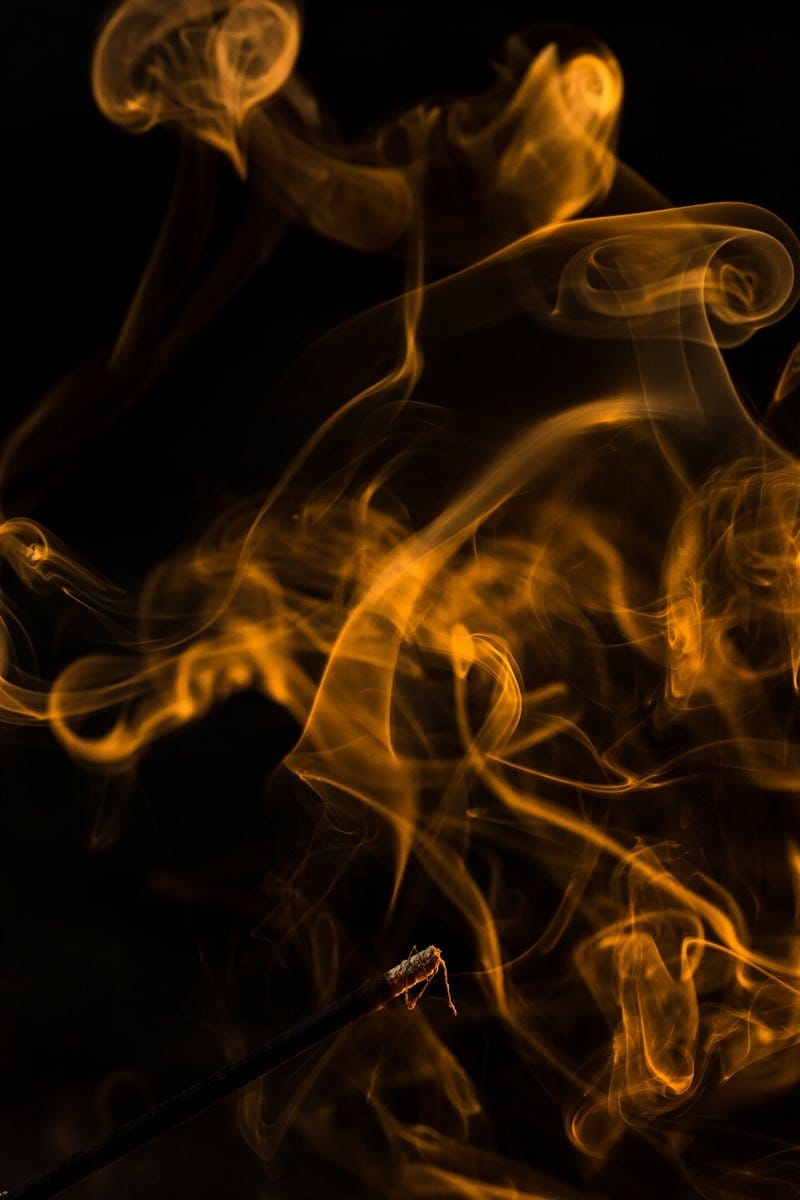Incense
Frankincense bears the scientific name gum olibanum and is a gum resin that is mainly extracted from the frankincense tree species Boswellia carterii. Frankincense trees and shrubs belong to the genus of balsam tree species, of which there are more than 20 species. Boswellia grow in the dry areas of the African continent, on the Arabian Peninsula and in India. The thorny shrubs and small trees with feathery leaves and whitish or reddish blossoms provide the coveted resin that has been transported from the Arabian Peninsula to Aleppo and Damascus and from there on to Europe via the so-called Incense Road since the third millennium BC. The dried gum resin solidifies in the air to form brownish, reddish or yellowish crystalline grains, usually dusted white on the outside. At normal temperatures, incense is almost odourless, but when burnt, it develops an aromatic and intense odour.


A popular incense for thousands of years
Incense served as a popular incense in many ancient and ancient oriental mysteries, death cults and cults as well as in the Old Testament and in Roman-Byzantine court ceremonies. In the Christian liturgy, too, incense has been used at holy masses since the fourth century AD until today. The German name Weihrauch (incense) goes back to the Old High German word wihrou(c)h, meaning sacred incense. Other names for incense are boswellia resin and olibanum. In Latin, incense was called thus or thymiama and in English it is called incense or frankincense. Frankincense has always been used in herbal medicine and in traditional Indian Ayurvedic medicine. Frankincense is usually harvested in March and April by cutting into the branches and stems of the plants, where a sticky and milky liquid soon emerges which is dried in the air.
Frankincense – an ancient and valuable remedy
Frankincense comes in very different qualities. The yield from the harvest depends on the size, age and condition of the trees and bushes. The survival of frankincense plants is threatened. Most frankincense comes from Somalia. Other frankincense exporters are Ethiopia, Eritrea, Sudan and countries in southern Arabia. Frankincense is composed of essential oils, mucilage, resins, resin acids and proteins. The proportions can vary depending on the type of frankincense. In ancient times, religion and medicine were closely linked. This can be seen from the fact that words like holy and healing have the same etymological origin. In addition to being used for religious rituals, frankincense was traded expensively in antiquity and used to make ointments and other remedies for cleaning wounds and for fumigating rooms.
